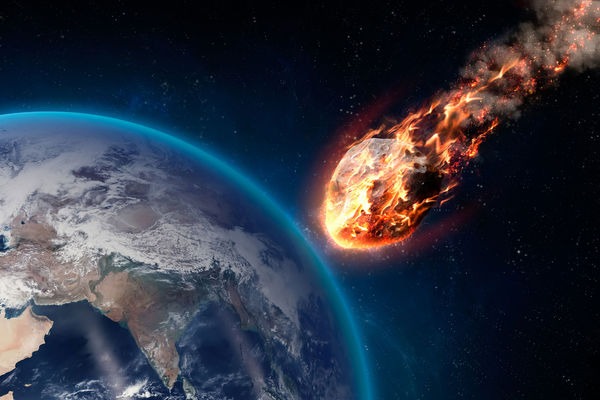Experts have revealed the exact date when an asteroid could crash into the Earth’s surface with the force of 22 atomic bombs, and now NASA scientists are working to deflect its trajectory.
According to scientists, the exact day the asteroid could crash into the Earth’s surface with the force of 22 atomic bombs.
Asteroid Bennu flies past our planet every six years, but scientists say a collision with it could happen on September 24, 2182.
Although the potential date of the world’s end is still very far away, NASA is already trying to divert Bennu from the course and is on the “last stage” of the mission.
Recall that the agency sent a spacecraft to the asteroid seven years ago to collect samples, hoping that the information gathered would help prevent a possible catastrophic collision.
The final samples from Bennu should reach Earth this week, and on Sunday (September 24), they will get to the Utah desert – precisely 159 years before Bennu’s possible impact.
In an interview with the Sunday Telegraph, Rich Burns, OSIRIS-REx project manager at NASA’s Goddard Space Flight Center in Greenbelt, Maryland, said: ” We are currently in the final leg of this seven-year journey, and it is very much like the final kilometers of a marathon when emotions such as pride and joy coexist with the determination to complete the race successfully.”
Bennu’s potential impact may seem alarming, but the odds of devastating effects are only one in 2,700.
The size of the rock is about a third of a mile, while the asteroid that caused the dinosaur extinction event was about six miles wide – about 20 times the width of Bennu.
So, the incoming rock is not large enough to cause a worldwide extinction event, but NASA calculates that if it had crashed into Earth, it would have formed a crater about six miles in size and driven 600 miles of destruction in all directions.
There is a one in 1,750 chance that Bennu could collide with Earth between now and 2300.
The fragments currently on their way to Earth should help researchers shed light on the rock: they will be dropped to Earth from the OSIRIS-REx spacecraft in a refrigerator-sized capsule.
The descent vehicle carries about 250g of rock material collected from the surface of Bennu in 2020.
It is due to enter Earth’s atmosphere on September 24 at about 8.42 a.m. local time (3.42 p.m. Moscow time) and fly over the planet’s surface at about 28,000 miles per hour.
The lava temperature is expected to be twice as hot when it does so.
However, parachutes will be released before impact with the planet’s surface, slowing its speed to 11 mph, allowing the capsule to land safely at the U.S. Department of Defense’s Utah Test and Training Range.
Nicola Fox, associate administrator of NASA’s Science Mission Directorate in Washington, said: ” The untouched material from asteroid Bennu will help shed light on the formation of our solar system 4.5 billion years ago and perhaps even how life on Earth originated.”

 Discuss
More news
Discuss
More news


